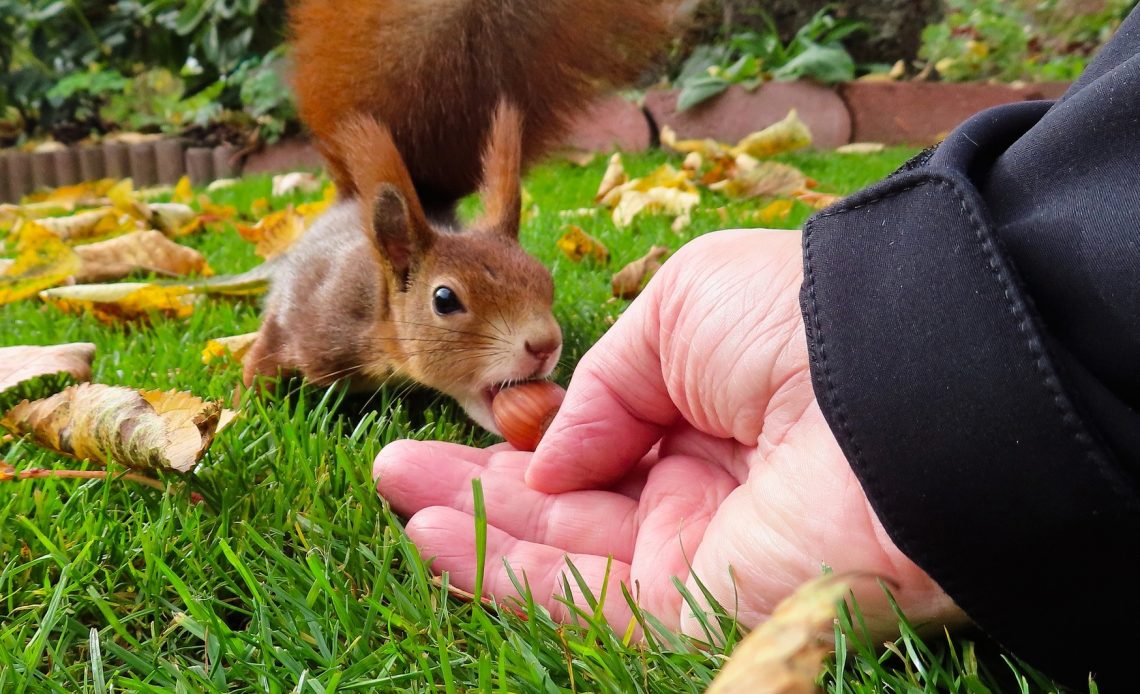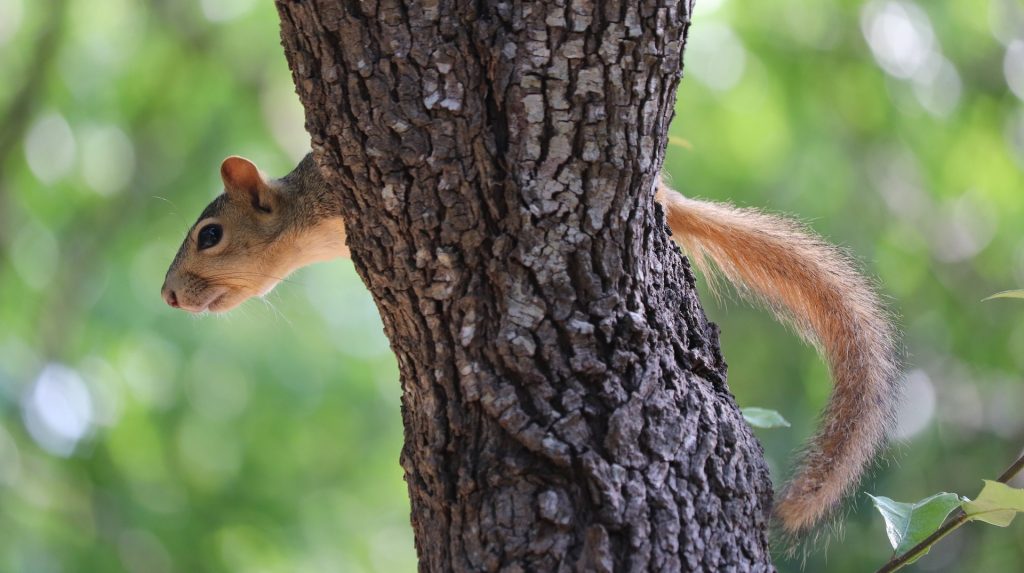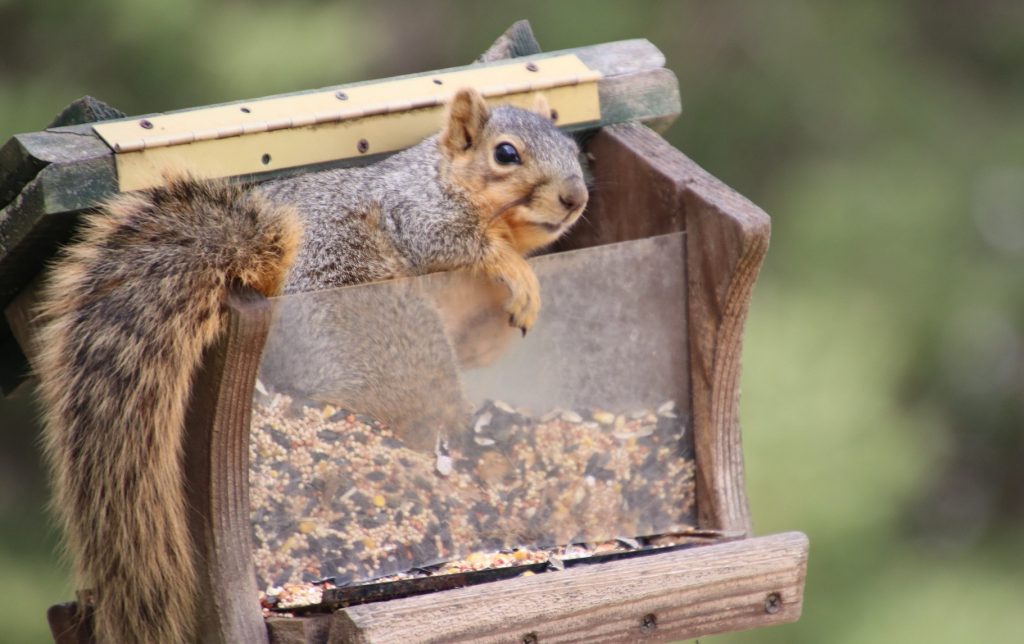

We’re here to help! Wild Yards is a completely free website that is 100% dedicated to helping you create a wildlife-friendly, sustainable yard. Read more
WildYards is reader-supported. When you buy a product through a link on our site, we may earn a comission. Every product is independently selected by our (obsessive) editors and our reviews are unbiased and objective. Read more about our mission or our privacy policy.
Who wouldn’t want to see a few squirrels in their yard or garden from time to time? They are incredibly cute, impressively intelligent, and have an important role to play in our ecosystem. But, do you know how to attract squirrels to your yard?
If not, don’t worry – here’s everything you need to know.
Why should I attract squirrels to my yard?
Squirrels are fascinating to watch scurrying around our gardens and yards – it’s little wonder they are so popular. However, they sometimes get a bad rap for stealing food that’s meant for birds we invite into our gardens, too!
However, squirrels actually play a vital role in our ecosystem – though they may not intend to, nuts and seeds that they bury and leave behind can lead to plant growth across our yards and wider green areas. Therefore, it makes sense to try and protect these creatures as much as possible!
Sadly, squirrels are frequently hunted, and they can be quite timid creatures, running away at the first sign of trouble. Squirrels can camouflage themselves, but it’s more likely that one will go scurrying away if a predator is in the area.
Because squirrels are rare sights thanks to their flighty nature, many of us want to welcome them into our yards. Thankfully, encouraging squirrels is a fairly easy job – given that they are famously ravenous, much of what you’ll need to do is offer them a tasty selection of nutritious squirrel snacks.
However, there’s more to attracting squirrels than just putting on a feast.
Make sure your yard is safe
Above all, squirrels will be looking for covered areas where they can feel safe retreating to. As mentioned, the squirrel is a flighty creature that will often flee at the first hint of danger.
For those of us who have plenty of trees and bushes, providing natural cover will not be difficult. However, if you have a big, open space, then squirrels are not likely to want to come and spend much time there. This is because they need to be able to run and hide at a moment’s notice, and if they are in a wide, open space, they are likely to feel vulnerable.
Be sure to give your squirrels plenty of hidden spots where they can take refuge. That might mean rewilding your garden (letting your grass grow long – which is great for attracting butterflies, too), piling up some logs, or focusing on growing and cultivating shrubs and bushes.
Squirrels don’t always spend their time high up in trees – they can come to lower ground to bury and unearth food, so giving them quiet little spots across your yard to retreat to is a must.

…that means keeping pets at bay, too
You may have noticed squirrels teasing your dog from time to time – and while it’s pretty cute to watch, it’s an altogether better idea to keep your pets and any wild squirrels completely separate.
Although this may sound a little harsh, it’s to the benefit of both your pets and your local wildlife. Cats and dogs naturally chase after squirrels, and while some of them might appreciate the interest, they are far more likely to be scared and eager to get away.
What’s more, if your dog or cat manages to catch a squirrel, they are at risk of catching fleas, ticks, and various parasites they are simply not built to fight off. Therefore, the humane thing to do is to try and keep your domesticated animals away from your wild visitors.
For example, you could section a squirrel-attracting area of your garden off with wiring or fencing. A more lasting – but perhaps less kind – option would be to completely keep your pets out of your garden. With dogs, that might simply mean making sure you walk them in the neighborhood – but with cats, control is a lot trickier!
Grow plants and trees
It’ll take time, but one of the best ways to bring squirrels to your garden is simply by giving them ample nesting spots. As you’ll likely know, squirrels love trees – they are high off the ground, and their hollows are fantastic, safe spots for them to hoard food in for the winter.
Trees such as pines, willows, aspens, and spruces are among some of the best for bringing squirrels to your yard. It’s also worth noting that trees that give off squirrel food (i.e., acorns and nuts) such as oaks are great for keeping them well-fed.
What you’re going to need to remember here is that if any branches touch your home, and they are strong enough to hold the weight of a squirrel, they could try making a beeline for your property if they’re intrigued – and that could lead to both squirrels and people getting shocked!
That said, it’s a good idea to try and set up your own squirrel feeder and station, too. Did you know that squirrels will run out in the rain if they are desperate for food? It’s a good idea to ensure they always have a backup option.
Setting up squirrel feeders
Squirrels are motivated massively by food – and it’s both a blessing and a curse that they will eat pretty much anything. For example, squirrels will eat bird eggs if they are hungry enough. Therefore, save your bird population and start giving your local rodents something they alone can munch on.
Setting up a squirrel feeder is a great idea to keep your birds and rodents separate. This tends to be worthwhile so that both sets of animals have their own food sources and won’t steal off each other’s plates!
Squirrels, in fact, are famous for learning how to steal food – which is where they can get some of their bad reputations from!
Squirrel feeders are available to buy from a variety of sources – such as pet stores and online retailers such as Amazon. These feeders are great for keeping squirrels to themselves – as they are built purely for them to access alone. Of course, if this isn’t likely to concern you, then setting up a standard bird feeder just for squirrels might be a good option.
However, you’re going to need to keep that squirrel feeder full! Squirrels may not flock to your feeder right away, but after a few days – once they know your yard is safe – the rations will likely start depleting pretty quickly!
Make sure that you keep a safe distance – again, human contact is likely to chase them away, even if you have the best intentions.

What to feed squirrels
As mentioned, squirrels will eat all kinds of natural goodies – and most famously, they’ll enjoy acorns, walnuts, corn, sunflower seeds, almonds, and hazelnuts. These are all fantastic to feed your squirrel on – they’re nutritious and won’t upset their stomachs!
Squirrels also love dining on some fruit and vegetables, too. You may wish to fill your squirrel feeders with sweetcorn, beansprouts, carrots, apple, spinach, celery – the list goes on.
Squirrels will eat mealworms, too, and they are fantastic sources of protein for your local rodents. So, be sure to set out some either dried or live worms for your furry visitors. Don’t forget to do so separately from your birds, as they’ll love eating mealworms, too.
You must avoid putting anything in squirrel feeders that is fit only for human consumption. For example, salted, roasted, sugared, candied, and chocolate-covered items should be kept well away from squirrels. Anything they are unlikely to come across in the wild will potentially prove toxic.
Do also take advice regarding peanut butter with a grain of salt. Squirrels love peanut butter, but that doesn’t necessarily mean it’s healthy for them. Some PB contains aflatoxins, which can lead to serious health conditions for the humble squirrel when ingested.
It’s also worth noting that too much PB and other non-natural treats could lead to a dependency – meaning that your squirrels will refuse to fend for themselves if they know sweet, sugary butter is on demand.
A final tip for feeding squirrels is to try shredding up the food you give to them. This will potentially stop them from burying food in your yard if you wish to avoid it.
Provide plenty of fresh water
As well as leaving food for squirrels, it is also important to provide them with a good water source. You can use a tray, bowl, or shallow dish and fill it with fresh water once a day. Place it near bushes and tree bases so that the squirrels can easily access them and get to them without any interference from other animals.
Remember to keep their water dishes full, especially during the summer – on hot days, it is best to keep the water in the shade so that it does not evaporate quickly. Remember to break any ice on cold days and even put some lukewarm water out to fight the cold.
Stand well back – and observe from afar
The ultimate way to attract squirrels into your garden is simple – keep well away from your squirrel feeders and trees. Squirrels will not want to come into your yard if you are a constant presence – no matter how tempting those morsels you fill up their feeders with might be.
However, we understand you’re probably keen to catch sight of local squirrels once in a while! Therefore, we suggest perhaps setting up a wildlife camera that you can hide under foliage or close by without scaring any visitors away. You could set up your own live feed and monitor from your smartphone or laptop! Watching squirrels groom each other and play hide and seek is great fun.
While some sources suggest it’s possible to feed a squirrel from your hand, this is not always recommended. Once again, squirrels are wild animals – and unless you are trained to handle them, it’s likely best to enjoy watching them from afar.
Above all, be very patient
Squirrels, for all they are famously easy to attract with the right food and quiet enough conditions, still need to build up trust with you. That’s why it may take days – if not weeks – for you to start seeing squirrels heading to your yard.
Unfortunately, you can’t rush squirrel visitors. But, take heart – they are rewarding little creatures to welcome into your yard, and with a little care and due time, you will no doubt start bringing more and more fuzzy visitors into your own wild garden.
